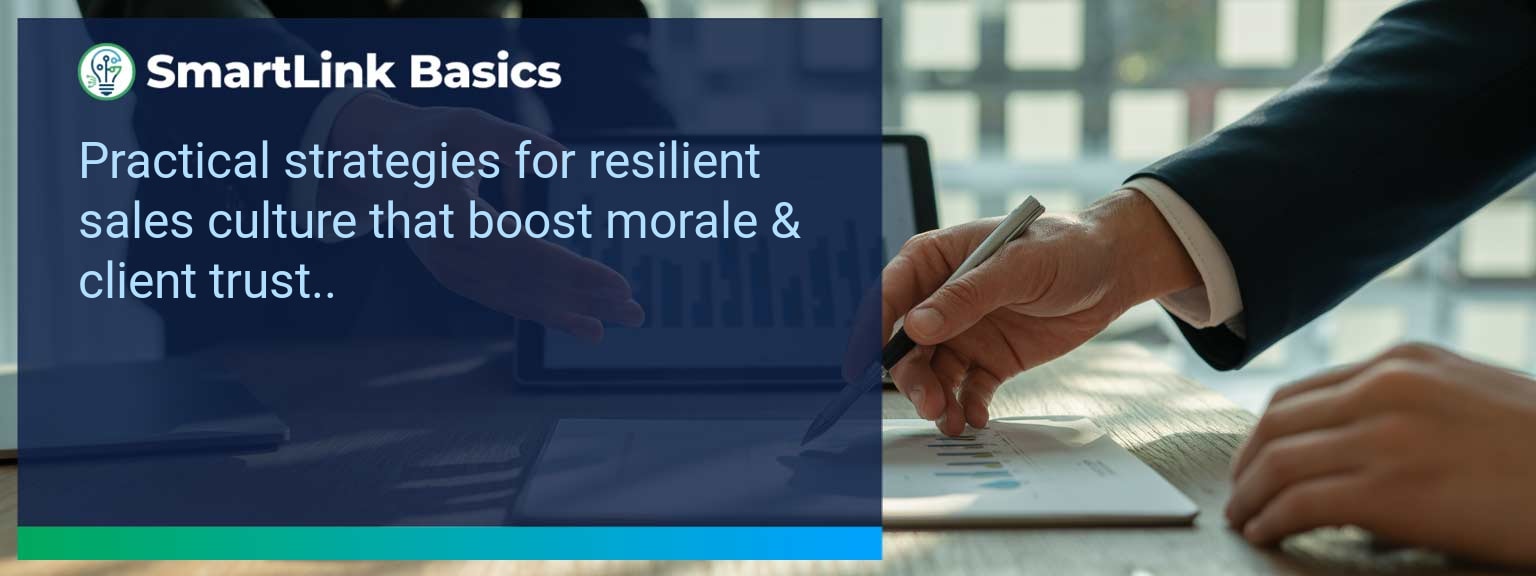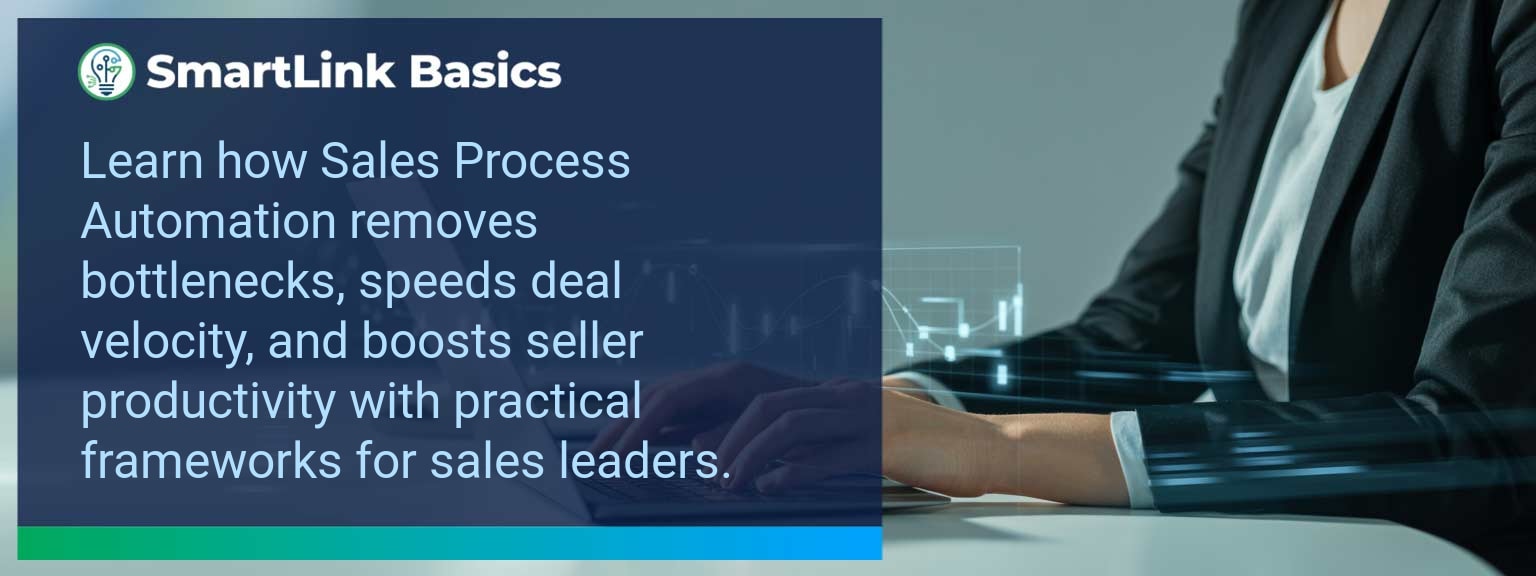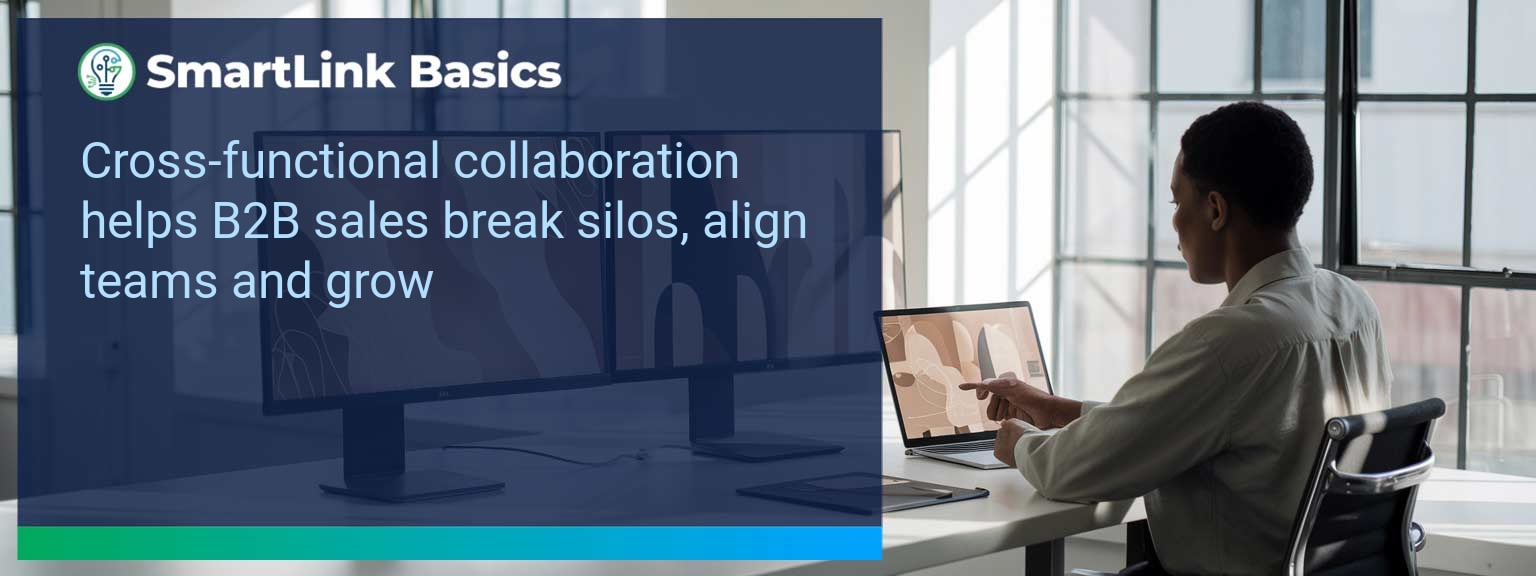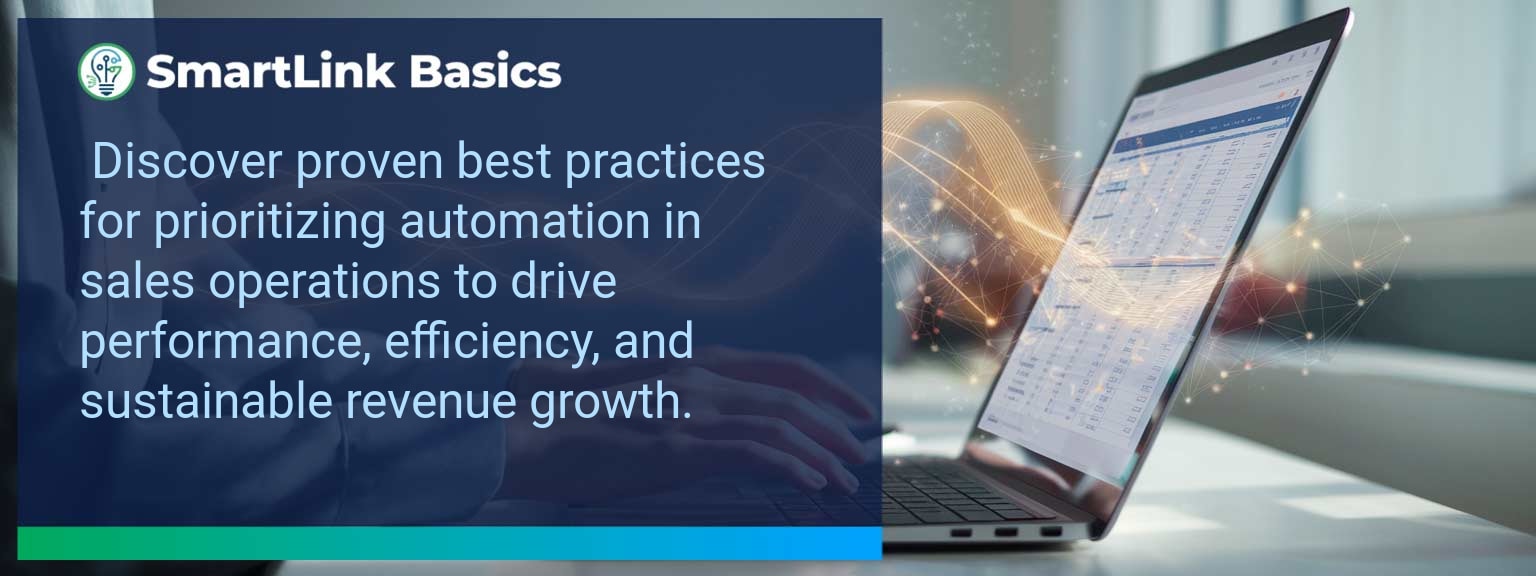Revenue teams that planned for volatility routinely outpace peers during disruption. SmartLink Basics helps sales leaders design repeatable systems that preserve revenue when conditions change. Building a Resilient Sales Culture means setting up adaptive sales processes, clear operating cadence, and enablement that reinforces both skills and wellbeing. This article explains practical sales culture strategies you can apply immediately, including a 90-day plan, measurable metrics, and playbook items to protect pipeline and customer engagement.
- Recenter your revenue operating system around customer segments and measurable plays.
- Prioritize team morale and targeted enablement to sustain sales resilience.
- Use sales automation and analytics to reduce risk and speed decisions.
- Strengthen customer relationships through empathy, proactive outreach, and value-based selling.
- Measure leading behaviors, lagging outcomes, and quality signals to track progress.
What Changed and Why It Matters Now — Resilient Sales Culture
Many sales organizations still rely on static quotas, rigid territories, and one-size-fits-all messaging. Those habits break down when buyer priorities shift. A Resilient Sales Culture shifts the emphasis to adaptable sales routines, clearer role accountabilities, and faster learning loops.
That shift matters because market disruptions now come faster and with more variability. Leaders who invest in sales resilience keep pipeline velocity higher and reduce revenue volatility. Start by auditing where processes, technology, or incentives force rigidity and map quick tests to restore flexibility.
Redesign The Revenue Operating System For Resilient Sales Culture
ICP, Segmentation, and Targeting
Start by narrowing who you sell to and why they buy. Define a small set of high-value segments and document pain, decision criteria, and typical buying committees. Use this to prioritize deals and focus limited resources where they matter most.
Actionable step: run a two-week win/loss micro-study per segment to validate the ICP and adjust outreach templates based on real signals.
Pipeline Architecture
Design pipeline stages that reflect buyer progress, not internal tasks. Introduce fast-fail gates and qualification checkpoints to reduce time wasted on low-probability opportunities. This increases forecast accuracy and helps scarce sellers spend time on deals that will close.
Example: convert a 7-stage funnel to a 4-stage model with clear entry criteria and a “time-to-commit” benchmark for each stage. Track stage conversion velocity weekly and reallocate coaching where velocity drops.
Plays and Messaging
Create a playbook with prioritized plays for common buyer situations. Each play should include objective, stake-holder map, one-line value proposition, and fallback options. Plays reduce variability in execution and make coaching more targeted.
Practical test: deploy three plays for top segments, measure engagement lift, and iterate weekly based on customer response and frontline feedback.
Operating Cadence
Set a predictable rhythm for planning, coaching, and decision-making. Weekly huddles focused on priority accounts, rapid deal reviews, and a monthly strategy sync help teams stay aligned. Cadence gives permission to adapt without creating chaos.
Action: replace a long monthly review with four short weekly checkpoints and one focused monthly deep-dive to free bandwidth for frontline work.
Prioritizing Employee Well-Being and Engagement
Team morale influences effort, persistence, and creative problem solving. Sales leaders should treat engagement as a performance lever—not a nice-to-have. Regular 1:1s, transparent forecasting, and small, predictable wins support sustained effort.
Example: a mid-market software firm moved to weekly micro-coaching sessions and saw activity rates and close rates rise within a quarter. Practical step: add a short morale pulse to weekly huddles and act on the top two signals.
Leveraging Technology for Improved Decision-Making
Data and automation reduce uncertainty. Use sales enablement platforms to automate low-value tasks and analytics to predict churn and buying intent. Well-implemented tools free sellers to focus on relationships and strategic conversations.
Example: a B2B vendor applied intent signals and AI-assisted prioritization to re-score pipeline; the result was a 20% increase in qualified meetings. Action: pilot a small AI scoring model on one segment and validate uplift before scaling.
Building Stronger Customer Relationships
In tough times customers value empathy and clarity. Train sellers to diagnose business outcomes, not just product features. Frequent, short check-ins that surface changing priorities keep deals alive and uncover expansion opportunities.
Example: a services company expanded renewals by offering outcome-based check-ins and simple ROI templates. Action: create a customer check-in play that focuses on current priorities and next-step commitments.
Continuous Learning and Market Adaptation
Resilient selling depends on continuous skill refresh and rapid knowledge sharing. Micro-learning, battlecards, and recorded role-plays make it easier to spread what works. Build a rapid feedback loop between sellers, marketing, and product.
Example: rotate a “play of the week” into the huddle and require one seller to share a 3-minute lesson learned. Action: codify three learning modules tied to common objections and measure uptake.
The Metrics That Matter table below summarizes leading, lagging, and quality measures you can track to gauge progress toward a Resilient Sales Culture.
| Category | Metric | Definition | Target |
|---|---|---|---|
| Leading | Weekly Play Adoption Rate | % of rep activity using approved plays | 75%+ |
| Leading | Qualification Gate Compliance | % deals passing defined qualification gates | 85%+ |
| Lagging | Quarterly Revenue Attainment | Total revenue vs. plan for the quarter | 95%+ |
| Lagging | Win Rate on Priority Segments | % closed/won deals within defined segments | 30%+ |
| Quality | Alignment Score | Cross-functional rating of deal fit and timing | 4/5+ |
| Quality | Customer Engagement Quality | Survey-based score on value of seller interactions | 8/10+ |
Get the 90-day plan, coaching rubric, and dashboard template to operationalize AI in your enablement program.
Measuring Resilient Sales Culture Impact
Tracking behaviors, outcomes, and quality signals tells you if culture change is real. Use the metrics above to connect frontline actions to revenue outcomes and to protect team morale through visible wins. Tie compensation design and coaching priorities to the leading metrics so behaviors shift in predictable ways.
Action: run a 90-day A/B test where one group follows the new playbook and the other continues current practices; compare leading indicators and revenue outcomes.
Lead With Resilience To Protect Revenue And People
The tactics above assemble into a repeatable approach that balances customer focus with internal sustainability. Use the 90-day scope, the metrics table, and the playbook tests to start shifting culture this quarter. Explore AI-driven sales enablement resources from SmartLink Basics for toolkits, templates, and deeper frameworks to operationalize these ideas.








